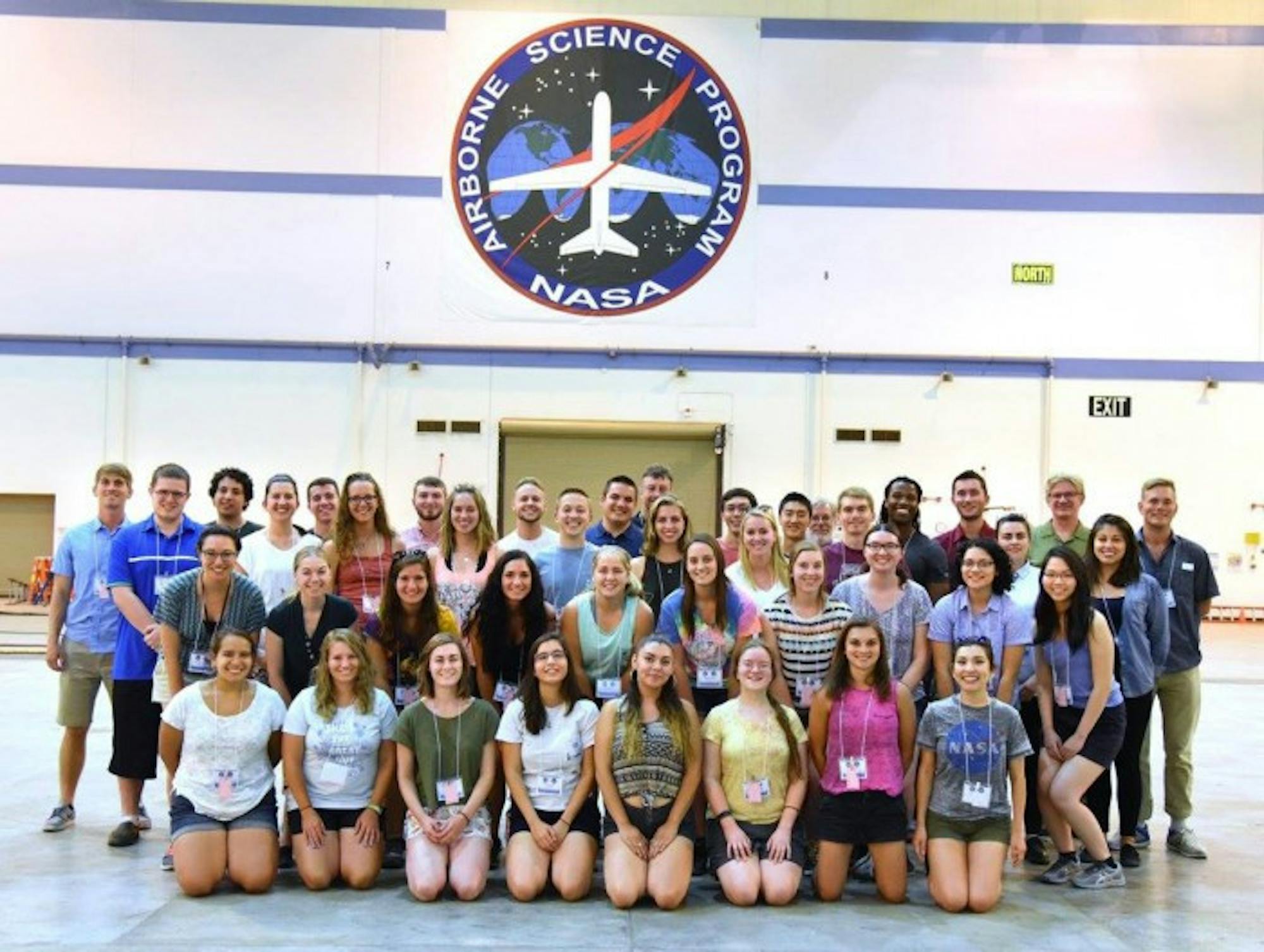Saint Mary’s senior, Emily Najacht, spent eight weeks of her summer working as one of 32 interns conducting research with The National Aeronautics and Space Administration (NASA) in the Student Airborne Research Program (SARP) in Palmdale, California. 
According to NASA’s website, SARP is a summer internship opportunity for rising undergraduate seniors that allows students hands-on research opportunities relating to the student’s degree. Najacht, who is majoring in chemistry and environmental engineering, said her summer research related to air quality in Los Angeles.
Najacht said she was both concerned and excited to begin the internship, especially when she and the other interns went to listen to lectures from people like Dr. Mike Brown, the professor who declassified Pluto as a planet, shortly after they arrived.
“We showed up and there were a lot of lectures from high and mighty people,” she said. “It was definitely intimidating.
“I thought this was going to be tough, and it was,” Najacht said. “But by the end of it, there were others who were just as determined as me and it made it all the better.”
The SARP research process began with students flying on the NASA C-23 Sherpa and B-200 King Air planes in order to take air samples from Los Angeles. Najacht said once they got the data they needed, they split into four groups.
“Each group was assigned a mentor and then we decided what we wanted to do,” she said. “The research was on our own.”
Najacht and her group focussed on isoprene concentrations emitted from plants in the San Joaquin Valley. According to the U.S. National Library of Medicine, isoprene is an organic compound emitted mostly by plants that are able to tolerate higher levels of heat. Najacht and her group used the isoprene concentration levels as a probe to look at the ozone layer in the area.
Previous studies have shown that higher levels of aerosol found in the ozone layer may be due to heightened levels of isoprene. Based on Najacht and her group’s research, they have speculated the higher concentration of isoprene found in the air may be due to the droughts that have hit California.
Najacht said sometimes the research could be frustrating because it went in a different direction than the group was expecting.
“You would go in one direction and then find out that wasn’t the direction you needed and starting over,” she said. “The mentors were helpful in helping me to get over any roadblocks I came across.”
She said community living with the other interns also helped to make the work less daunting.
“We lived in a home together,” she said. “It was great family living and a good way to get to know everyone from around the country.”
The interns’ experiences were not limited to one NASA facility. Najacht said on the weekends they would go on field trips to other NASA facilities and to hike around California. However, Najacht said one of the main highlights of her trip was the presentations the interns gave to a large group of people from NASA.
Although Najacht does not plan on continuing to pursue research, she said she learned skills that she can apply to a possible future career in industry.
“It definitely gave me an insight as to what research is and what it entails,” she said. “It shaped what I’m going to do with my future plans.”
Najacht attributes her success in the NASA program to her Saint Mary’s education.
“I feel like it gave me the tools to overcome adversity while also giving me the experience of diversity,” she said. “I’ve lived in the Midwest my whole life. Moving to California and meeting all new people with a liberal arts education has allowed me to jump in that much quicker.”
Fellow Saint Mary’s senior, Mary Green, said she has often seen Najacht working hard late at night in Trumper, the Saint Mary’s computer lab located in Cushwa-Leighton Library.
“We had organic and biochemistry together,” Green said. “She’s always a fun person to be around to tackle a hard subject.”
Dr. Jennifer Fishovitz, assistant professor in chemistry and physics at Saint Mary’s, has taught Najacht in previous classes and said she recognizes Najacht’s passion for environmental engineering through her class work and participation in Saint Mary's Affiliates of the American Chemical Society (SMAACS).
“She was always very curious. A sure sign of a scientist,” Fishovitz said. “I have Emily again this semester in our Advanced Chemistry Lab, which is more independent and research-based than other labs and I'm really excited to see what she brings to the class from her experience at NASA.”
Saint Mary's senior completes NASA internship
Photo courtesy of Emily Najacht
Photo courtesy of Emily Najacht









